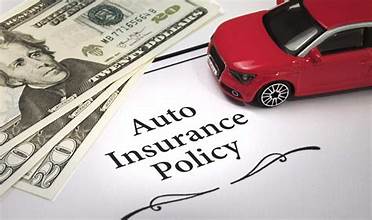
Car insurance rates have been on the rise, leaving many drivers wondering why they’re paying more for coverage than ever before. From increased repair costs to regulatory changes and shifting consumer behaviors, several factors contribute to this upward trend.
Rising Repair Costs
One significant factor behind the surge in car insurance premiums is the escalating cost of vehicle repairs. With the integration of advanced technology and sophisticated materials in modern vehicles, repairing even minor damages has become more expensive. From sensors to complex computer systems, the intricacies of today’s cars drive up repair bills, prompting insurers to adjust their rates accordingly.
Increased Frequency and Severity of Accidents
Another contributing factor is the uptick in both the frequency and severity of car accidents. Factors such as distracted driving, impaired driving, and congested roadways contribute to a higher likelihood of collisions. Additionally, the rising cost of medical care means that insurance companies must allocate more funds to cover bodily injury claims, further driving up premiums.
Technological Advancements in Vehicles
While technological advancements in vehicles enhance safety features, they also come with a price. Advanced driver assistance systems (ADAS) and autonomous driving technologies, while reducing the risk of accidents, require costly repairs and recalibration in the event of a collision. As more cars on the road incorporate these features, insurers must adjust their pricing models to reflect the increased costs associated with repairing technologically advanced vehicles.
Climate Change Impacts
The increasing frequency and severity of natural disasters, such as hurricanes, floods, and wildfires, have a direct impact on car insurance rates. Insurers must account for the heightened risk of vehicle damage in regions prone to extreme weather events, leading to higher premiums for drivers in these areas.
Regulatory Changes
Legislative shifts at both the state and federal levels can significantly impact insurance premiums. Changes in insurance regulations, such as mandates for increased coverage limits or alterations to no-fault insurance laws, can result in higher costs for insurers, which are then passed on to consumers in the form of higher premiums.
Economic Factors
Economic factors, such as inflation and unemployment rates, also play a role in the escalation of car insurance rates. Inflation drives up the cost of goods and services, including auto repairs and medical expenses, while high unemployment rates may lead to an increase in uninsured motorists, placing additional financial strain on insurance companies.
Insurance Industry Trends
Competition among insurers and shifts in risk assessment and pricing strategies contribute to fluctuations in car insurance rates. Insurers may raise premiums in response to increased claim payouts or to remain competitive in a crowded marketplace.
Consumer Behavior
Changing consumer behaviors, such as increased instances of distracted driving or shifts in vehicle usage patterns due to the COVID-19 pandemic, can impact insurance premiums. Insurers may adjust rates based on data indicating higher risk associated with certain behaviors or usage patterns.
Regional Disparities
Insurance costs vary significantly depending on the driver’s location, with factors such as population density, crime rates, and local regulations influencing premiums. Drivers in urban areas or regions with high rates of vehicle theft or vandalism may face higher insurance costs than those in rural areas with lower population density.
Future Outlook
While the factors contributing to the rise in car insurance rates may seem daunting, there is hope for the future. Continued advancements in vehicle safety technology, coupled with efforts to address distracted driving and mitigate climate change impacts, could lead to stabilization or even reduction in insurance premiums over time.
In conclusion, the surge in car insurance rates can be attributed to a combination of factors, including rising repair costs, increased accident frequency and severity, regulatory changes, economic factors, industry trends, consumer behavior, regional disparities, and climate change impacts. Understanding these factors can help drivers make informed decisions when shopping for insurance coverage.



